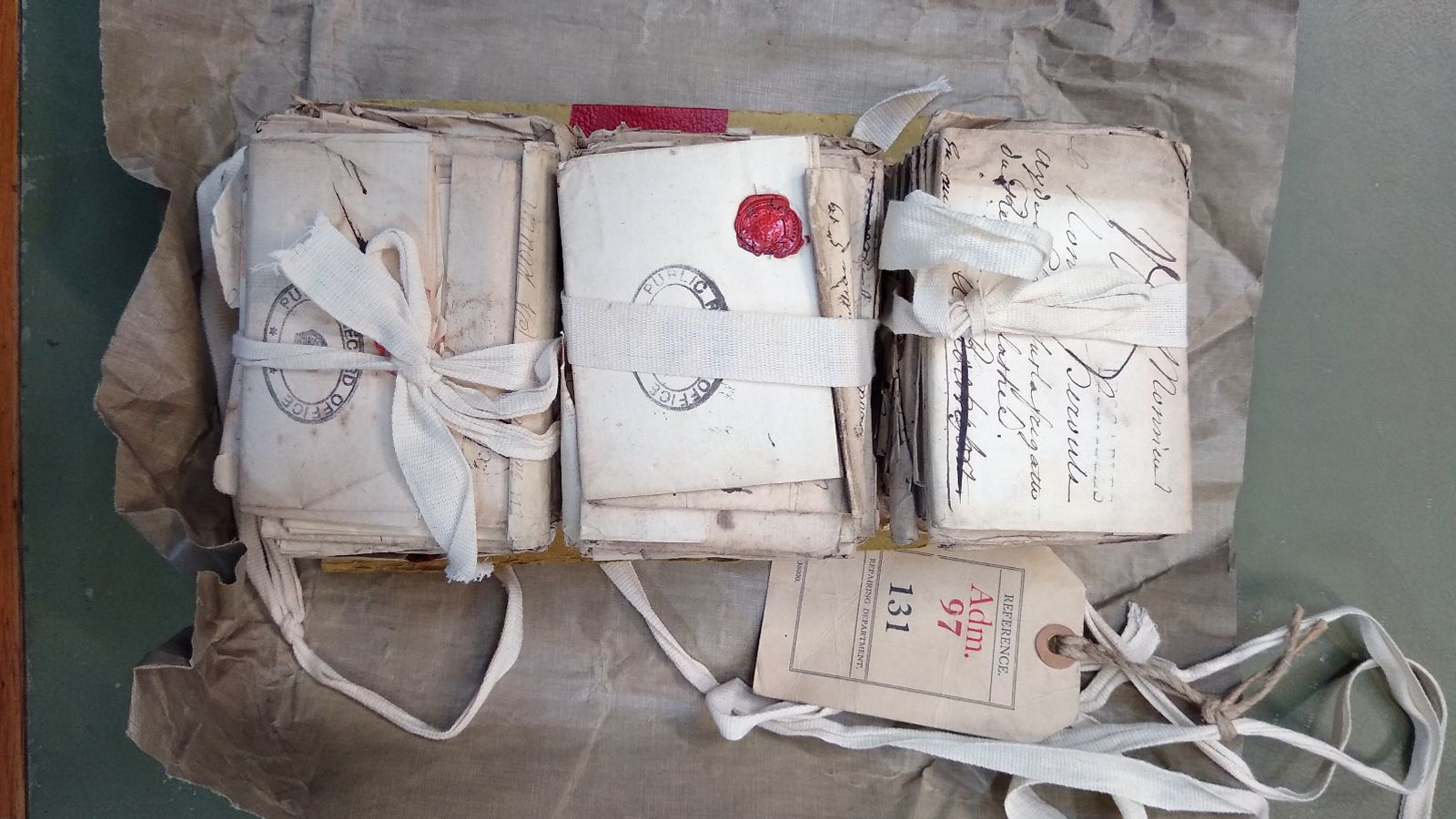These letters, written by wives, siblings and parents, were meant for crew on a French warship – but never got there. More than 260 years later, they’ve been opened for the first time after a chance discovery.
Personal letters confiscated by Britain’s Royal Navy 265 years ago before they could reach French sailors during the Seven Years’ War have been read for the first time.
Written between 1757 and 1758, the billet-doux (love letters) were meant for the crew onboard the Galatee, a French warship captured by the British.
The wives, fiances, siblings and parents who wrote the letters did not know the ship was taken when they sent them to the French postal administration for delivery.
When the couriers learned the ship had been captured, they forwarded the letters to England, where they were given to the admiralty in London and left in storage.
The academic who discovered the 104 letters from the National Archives in Kew said it was “agonising” how close the letters got to reaching the right people.
Professor Renaud Morieux, from Cambridge University, believes the British opened two letters to see if they gave away any military plans.
Seeing they contained only “family stuff”, they gave up and tucked them away in storage and they would remain unread for more than two centuries.
“There were three piles of letters held together by ribbon,” he said, adding he only asked to look at the box in the archives “out of curiosity”.
“The letters were very small and were sealed so I asked the archivist if they could be opened and he did.
“I realised I was the first person to read these very personal messages since they were written. Their intended recipients didn’t get that chance.
“It was very emotional.”
‘I cannot wait to possess you’
One of the letters was addressed to the ship’s first lieutenant, Louis Chambrelan, and was written by his wife Marie Dubosc.
“I could spend the night writing to you… I am your forever faithful wife,” she wrote. “Good night, my dear friend. It is midnight. I think it is time for me to rest.”
The pair never saw each other again after Dubosc died the following year in Le Havre, while Chambrelan remarried in France in 1761.
In another letter, Anne Le Cerf told her husband Jean Topsent, a non-commissioned officer: “I cannot wait to possess you.”
Prof Morieux said the letters are about “universal human experiences” and aren’t “unique to France or the 18th century”.
“They reveal how we all cope with major life challenges,” he said.
“When we are separated from loved ones by events beyond our control, like the pandemic or wars, we have to work out how to stay in touch, how to reassure, care for people and keep the passion alive.
“Today we have Zoom and WhatsApp. In the 18th century, people only had letters, but what they wrote about feels very familiar.”
Read more:
Scientists discover ‘origin story’ of Great Sphinx of Giza
‘Incredibly rare’ 5,000-year-old tomb and skeletons discovered
Prof Morieux identified every member of the Galatee’s 181-strong crew after months decoding the letters, which were written with wild spelling and no punctuation.
The letters were addressed to a quarter of the crew and he carried out genealogical research into the men and their correspondents to learn more about their lives.
His research is published in the journal Annales. Histoire, Sciences Sociales.

William Turner is a seasoned U.K. correspondent with a deep understanding of domestic affairs. With a passion for British politics and culture, he provides insightful analysis and comprehensive coverage of events within the United Kingdom.








